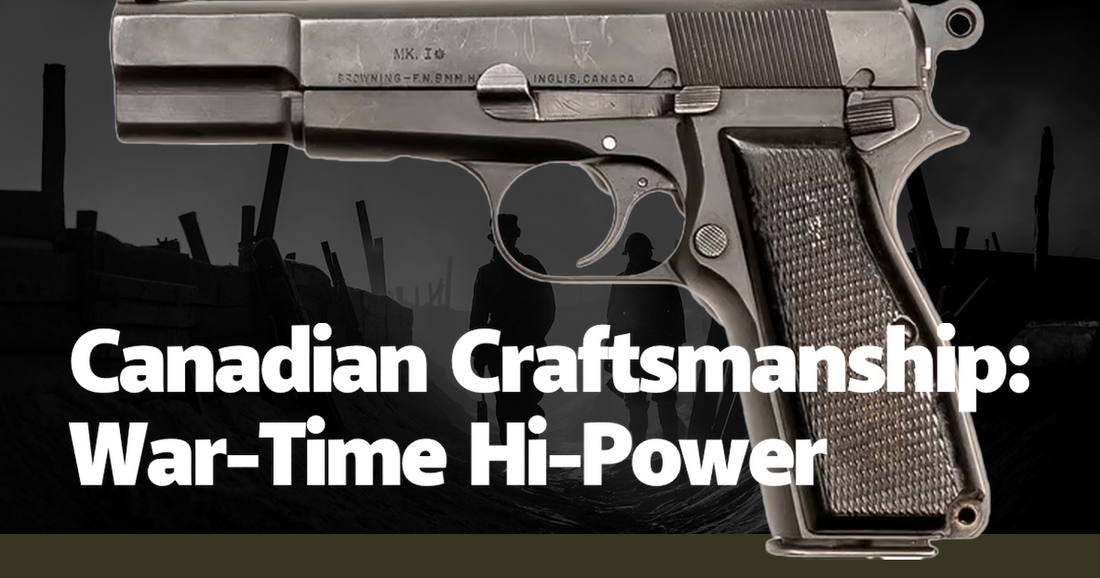Canadian craftsmanship has long been synonymous with quality and precision, but nowhere is this more evident than in the wartime production of the Hi-Power pistol. The Browning Hi-Power, a semi-automatic pistol designed by John Browning and completed by Dieudonné Saive, became a symbol of reliability and innovation during World War II. When Belgium fell to the Nazis in 1940, the production of these pistols was jeopardized. However, the Canadian government stepped in, tasking the John Inglis Company in Toronto with manufacturing the Hi-Power to ensure Allied forces would not be deprived of this critical weapon.
The John Inglis Company, originally a manufacturer of heavy machinery, had to pivot quickly to meet the demands of wartime production. This transformation was nothing short of remarkable. Workers who had previously been building steam engines and water turbines were now assembling precision firearms. The company’s ability to adapt and excel under pressure is a testament to Canadian ingenuity and resilience. The Hi-Power pistols produced by Inglis were not just replicas; they were improved versions that incorporated feedback from soldiers in the field, making them even more reliable and effective.
One of the most compelling stories from this period is that of the workers themselves. Many were women, stepping into roles traditionally held by men who had gone off to fight. These women, often referred to as “Rosie the Riveters,” demonstrated exceptional skill and dedication. They meticulously assembled each Hi-Power, ensuring that every component was crafted to perfection. Their contributions were crucial to the war effort, and their legacy is a powerful reminder of the collective effort required to achieve victory in times of crisis.
The Hi-Power pistols produced by Inglis were used by various Allied forces, including the British Special Operations Executive (SOE) and the Chinese Nationalist Army. The SOE, a secretive organization responsible for espionage and sabotage behind enemy lines, favored the Hi-Power for its reliability and high magazine capacity. Anecdotes from SOE operatives describe the pistol as a lifeline in the most perilous situations. Similarly, the Chinese Nationalist Army, engaged in brutal combat against Japanese forces, found the Hi-Power to be an invaluable asset. The pistol’s robust design and ease of maintenance made it ideal for the harsh conditions of the Chinese theater.
The craftsmanship of the Inglis Hi-Power did not go unnoticed. Experts and historians often point to the exceptional quality of these Canadian-made pistols. The meticulous attention to detail, from the machining of the barrel to the finishing of the slide, set the Inglis Hi-Power apart from other wartime firearms. Collectors and enthusiasts today still seek out Inglis Hi-Powers, valuing them not only for their historical significance but also for their superior build quality. This enduring legacy speaks volumes about the skill and dedication of the Canadian workers who produced them.
In addition to their practical use, the Inglis Hi-Powers also hold a place in the cultural memory of those who wielded them. Veterans often recount stories of their experiences with the Hi-Power, highlighting its reliability in the heat of battle. One such veteran, a British paratrooper, recalled how his Hi-Power never failed him during the intense fighting of Operation Market Garden. These personal anecdotes add a human dimension to the technical excellence of the pistol, underscoring its role as more than just a tool of war, but a trusted companion in the direst of circumstances.
The impact of the Inglis Hi-Power extends beyond the battlefield. In the post-war years, the expertise developed during its production contributed to the growth of Canada’s manufacturing sector. The skills and techniques honed by the workers at the John Inglis Company were applied to peacetime industries, driving innovation and economic growth. This transition from wartime production to peacetime prosperity is a powerful example of how the challenges of war can lead to lasting advancements in technology and industry.
In conclusion, the story of the Canadian-made Hi-Power pistol is a testament to the remarkable craftsmanship and resilience of the Canadian people. From the factory floors of the John Inglis Company to the battlefields of World War II, the Hi-Power stands as a symbol of quality, reliability, and ingenuity. Its legacy lives on not only in the annals of military history but also in the continued appreciation of collectors and historians. The Inglis Hi-Power is more than just a firearm; it is a piece of Canadian heritage, a reminder of a time when the nation came together to contribute to a global victory.

